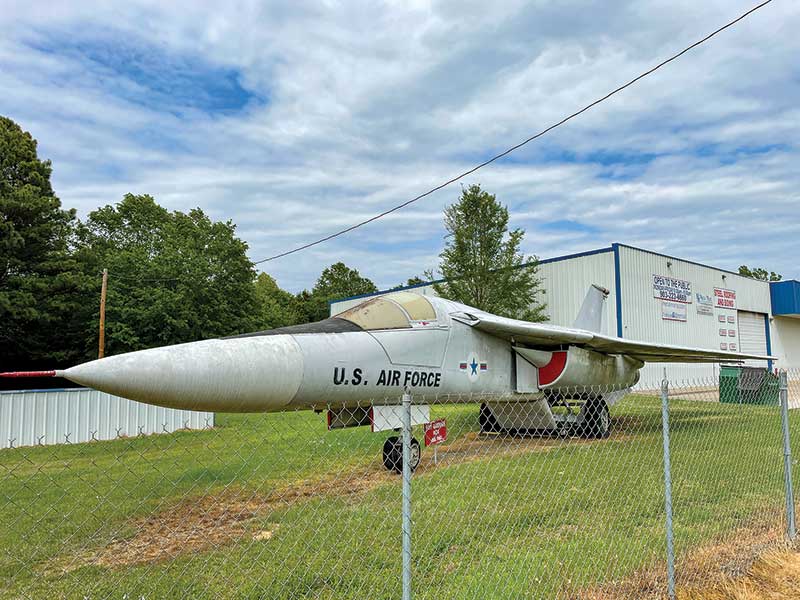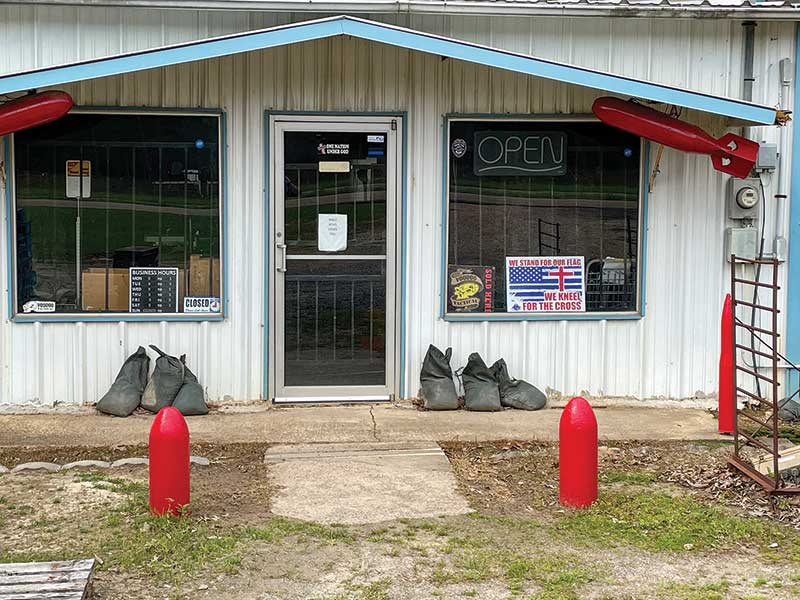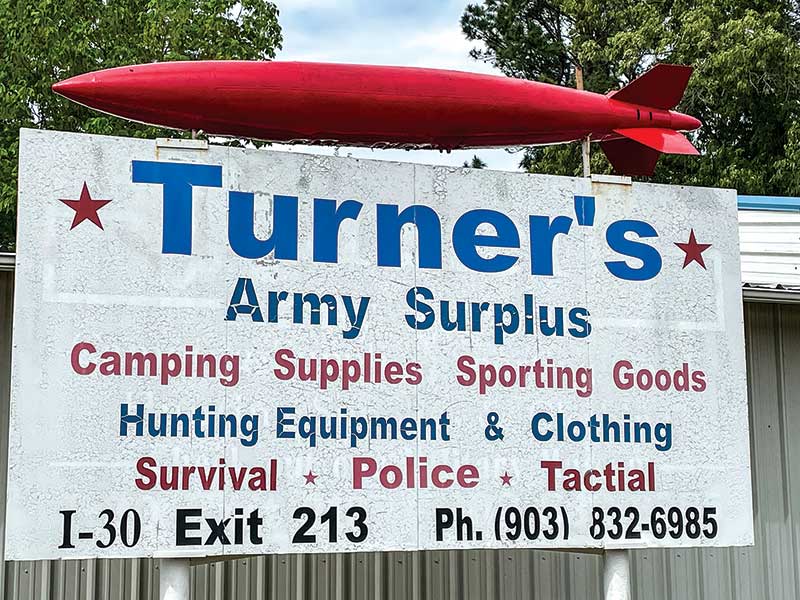
Category: Gear & Stuff
Recently, while driving from Mississippi to Dallas, Texas, I passed a real-live dinosaur on the side of the road. Right outside Texarkana, on the right heading south, there rests a derelict F-111 fighter/bomber. It’s tough to miss. It took a little maneuvering to find the right off-ramp, but I soon found myself standing before Turner’s Army Surplus. This deep into the Information Age, I thought Army Surplus stores had gone extinct. As I pushed into the dimly lit place, I was transported to a better time.
An Endangered Species
I grew up in a small town in Mississippi. Our commercial and social opportunities were limited, but I neither knew any better nor cared. I had a family that loved me and a rudimentary starter gun collection. Life was good.
One of the high points of visiting my grandparents down in Hattiesburg was Sack’s Army Store. Sack’s was located downtown and was a fairly high-brow establishment. In addition to the obligatory GI-surplus uniforms and field gear, they also carried commercial camping kit and survival supplies. Even now, some four decades later, I still have stuff that I bought there.
The archetypal Army Surplus Store, however, was something else entirely. There was a great one in Brandon, Miss. You know the sort I’m talking about. It occupied an unadorned metal building, the exterior of which had been crudely camouflaged with green and brown house paint. The few windows were heavily barred and old surplus Air Force practice bombs set into the ground defined the limits of the parking area. Just thinking about that place conjures a smile.
The interior smelled like a toxic combination of mildew, bug juice, cigarette smoke and feet. Rack after rack of old camouflage fatigues filled the main showroom, such as it was. Crammed haphazardly around the periphery were old combat boots (they never once seemed to have my size), stacks of vintage helmets, musty old sleeping bags and piles of filthy camo nets. Somewhere in the place was always one of those oversized cutaway military training rifles, most commonly a Garand, Carbine, or BAR.
The place in Brandon was run by a chain-smoking Vietnam vet who only rarely acknowledged my presence. He occupied his time burning coffin nails while glued to a 12″ portable TV. I swear, one time I went in there, the guy was watching an aerobic exercise program.
This store actually had a few guns. There were always a handful of vintage GI bolt action rifles along with an SKS or three. As this was the Deep South and formerly a war zone, there was typically a smattering of Civil War pieces as well. I recall drooling over a beat-up old Colt Navy that was way outside my price range.
I loved those old places. In my mind, every helmet dent was a ricocheted round, and the old guy would indeed tell you war stories if you sat down long enough to listen. Alas, I thought they were all gone by now. The proprietors fell prey to emphysema and heart disease, while the stores succumbed to the Internet and eBay.
Turner’s Army Surplus
That is what made my serendipitous find alongside the highway in Texarkana such a treat. Turner’s Army Surplus was like a time capsule. Dropping by brought back all those epic memories from my childhood.
For starters, part of the sign is misspelled, and I love that. What should say “Tactical” is actually spelled “Tactial.” A piece of 8.5″x11″ paper taped inside the front door says simply, “Smile, Jesus Loves You,” and is undeniably sincere. Another notice posted on the surrounding chain-link fence seems comparably genuine and states, “Are You Going to Listen to Me in English, or Do I Have to Speak to You in 12-Gauge?” This placard includes a graphic depiction of a pump-action 12-bore for emphasis.
Turner’s sports that same intoxicating Army surplus smell along with a fantastic array of tantalizing cool-guy stuff. In addition to the massive strike fighter parked outside, the nearby barn/shed contains a couple of beautifully restored vintage jeeps. Practice bombs and empty artillery shells litter the grounds.
In addition to the surplus gear for sale, Turner’s also includes a walk-through museum. This bit is adorned with interesting memorabilia obviously collected over decades. You can take it in over perhaps half an hour and will be glad you did. The staff is predictably friendly, as are most gun folk.
Lots of people trek up or down I-30 en route to someplace or other. If ever you need to stretch your legs around Texarkana, then Turner’s Army Surplus and Museum is definitely worth the stop. It’s at Exit 213. You can’t miss it. Just look for the massive swing-wing attack plane parked outside.
Luger Snail Drums

If you hang out in this hallowed space, you clearly like guns. If you like guns and you don’t live under a rock someplace, you already know the news. President Trump’s “One Big Beautiful Bill”, which recently passed the House, includes a snippet of language that removes sound suppressors from the purview of the 1934 National Firearms Act (NFA). This came about by the bill including Section 2 of the Hearing Protection Act. Trust me, this is a really big deal.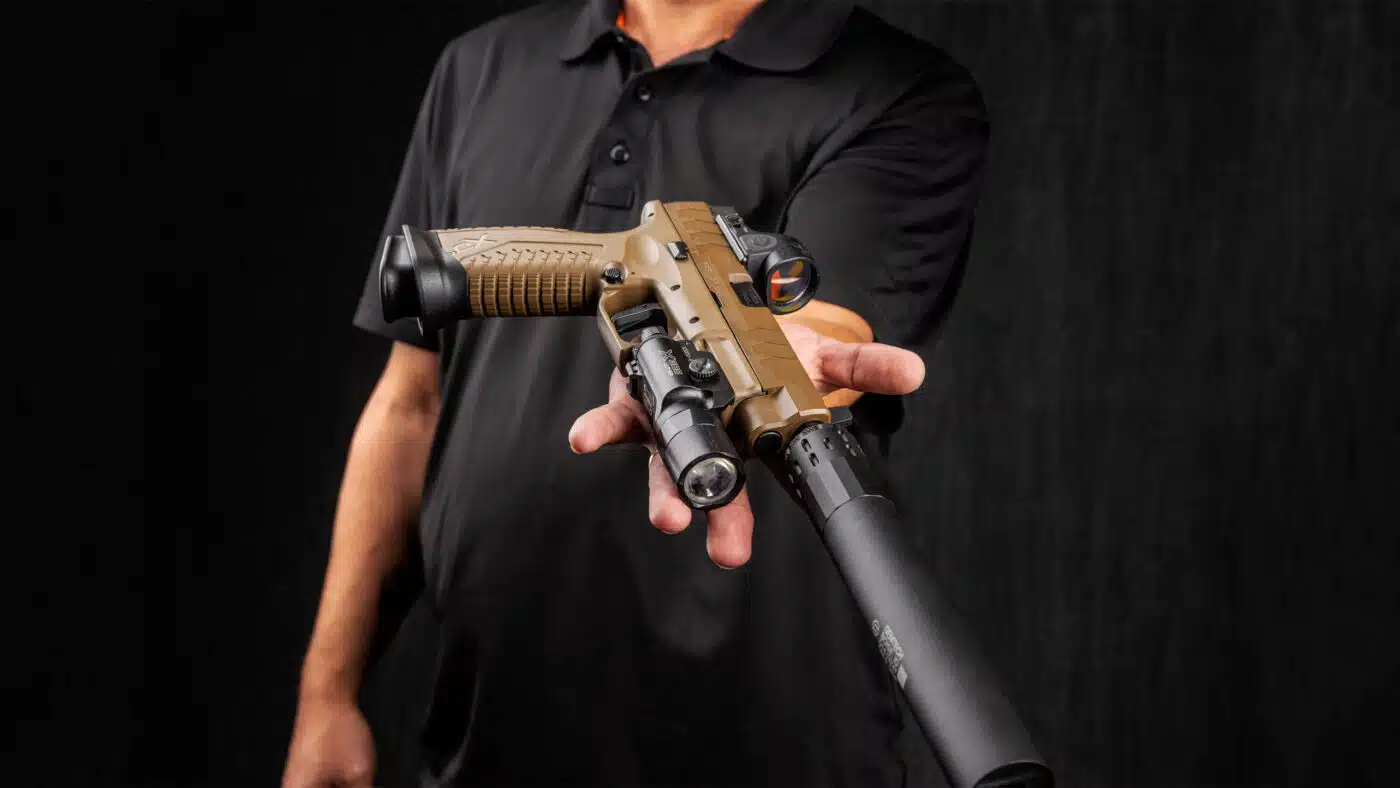
I’m not a lawyer. I took civics in high school, but that’s the extent of my practical education on the American legislative process. However, I have been a gun nerd for as long as I can remember. Live in this space long enough, and you start to pick up some things about how the American legislative system works. My mission today is to mine the details and explore a few what-if’s regarding how this could all shake out.
American Governance 101
My source is the Internet, but I have done a fair amount of reading. If I miss a few details, please forgive me in advance. As I said, I’m not a lawyer.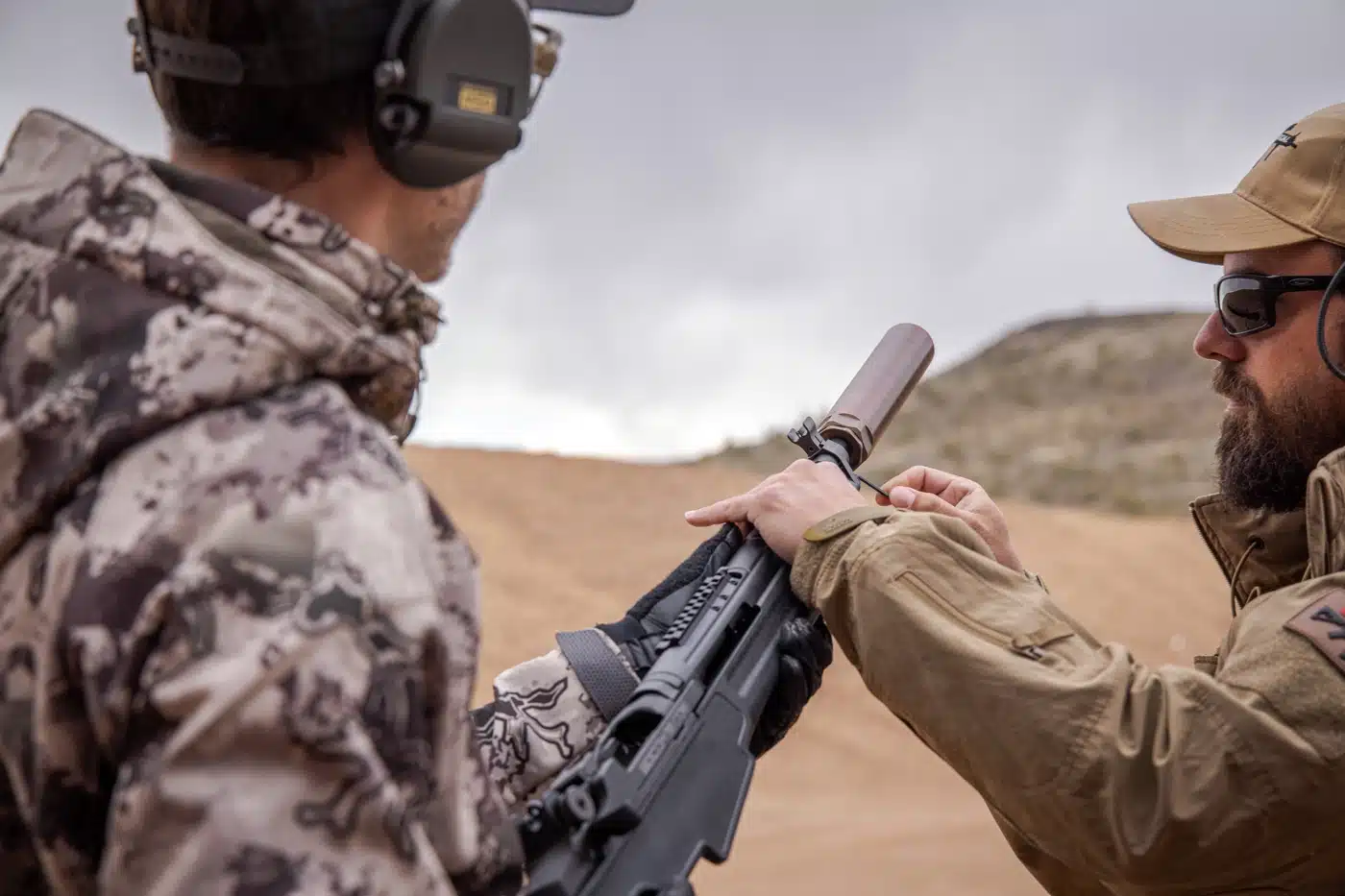
The One Big Beautiful Bill Act is House Resolution 1 (HR1) for the 119th Congress. The bill was introduced in the House of Representatives. To become law in America, a bill is debated in one house, tweaked as needed to gain sufficient consensus, and then passed. Then it goes to the other chamber, where the same thing happens.
These two approved bills are usually, by this point, pretty different. A conference committee then hammers out those differences into something both chambers can tolerate, and there is a final vote. If that final bill passes both the House and the Senate, it then goes to the President’s desk for signature. If signed by the President, the bill then becomes law.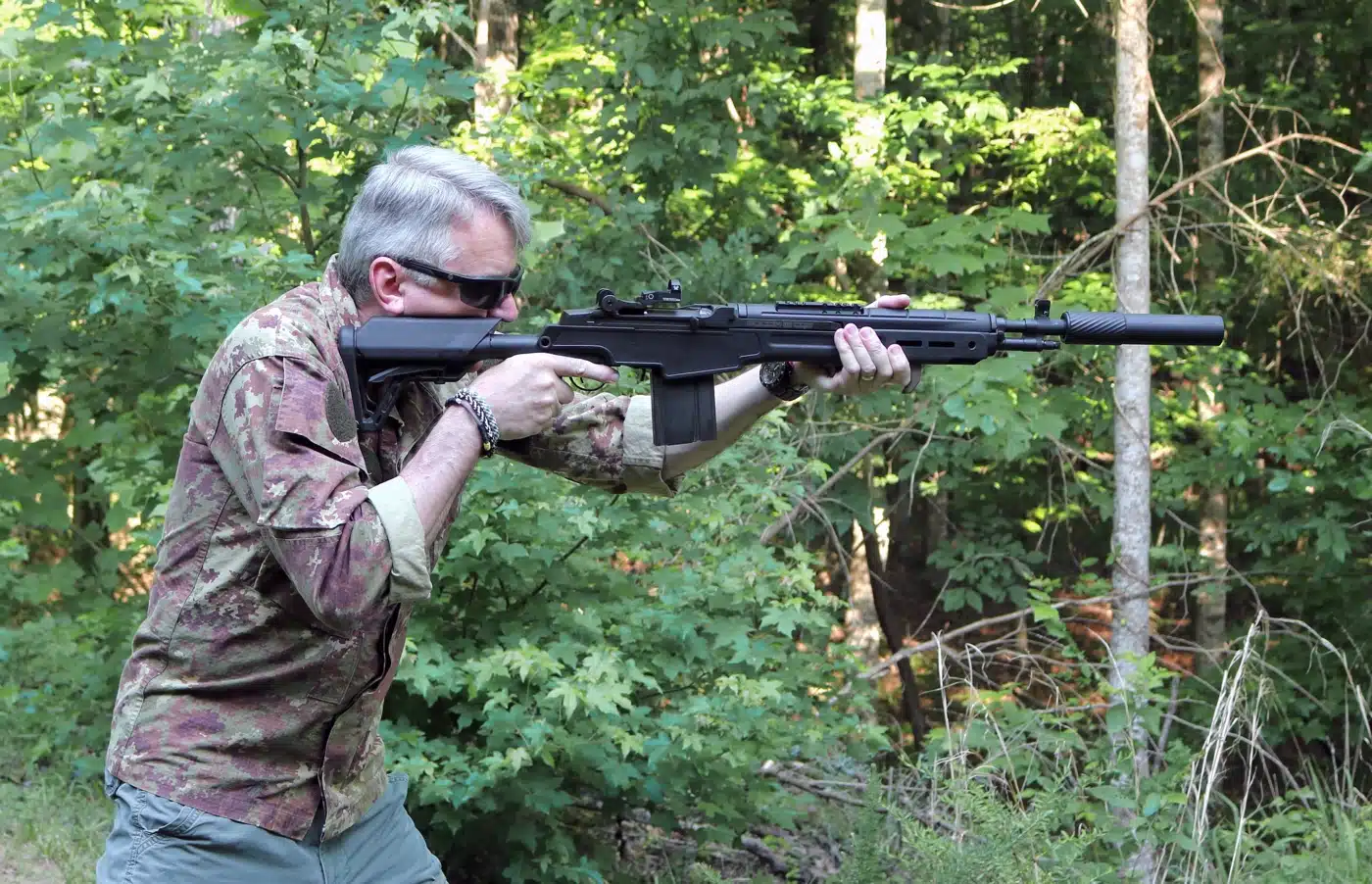
Passage in the House or the Senate requires a simple majority. However, in the Senate, the minority party can filibuster a bill. The sordid details don’t matter, but when that happens, it takes a 60-vote majority to override the filibuster. The filibuster was originally supposed to be a nuclear option that was used only in extreme cases. In our currently polarized world, the filibuster is seemingly used on a whim. As a result, many things can’t get through the Senate without a 60-vote supermajority.
Republicans currently outnumber Democrats in the House 220 to 212. The Republicans hold the Senate 53 to 47. Those 47 include two Independents who traditionally caucus with the Democrats. HR1 passed 215-to-214 in the House.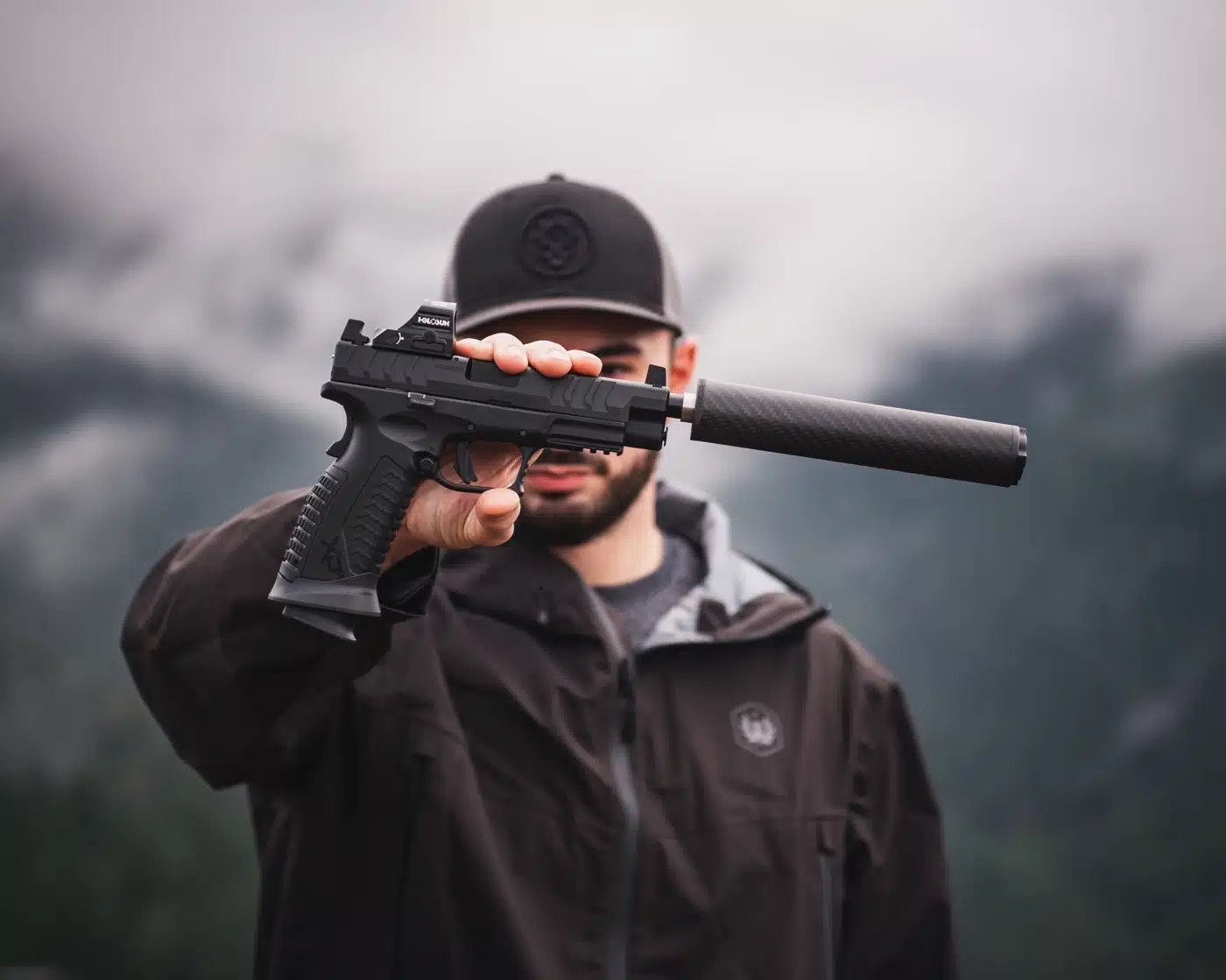
The consensus seems to be that if your team is in power, the filibuster is a travesty. If the other team is driving, it’s a blessing. The filibuster is one of the biggest reasons so little gets done in Washington these days. However, HR 1 is not a conventional bill. It is a budget reconciliation. Budget reconciliations are immune to the filibuster and pass via a simple majority. That is the only reason we might now see sound suppressors taken off of the NFA. Let me explain.
Details
As I currently understand it, the primary language in HR 1 that concerns sound suppressors simply removes them from the purview of the NFA completely. Should this pass, suppressors would be treated like Title 1 firearms. You would transfer them through an FFL dealer with a NICS check and a Form 4473. That means no more transfer taxes, fingerprints or processing time. More importantly, I believe it should also mean no more national registry of suppressor owners.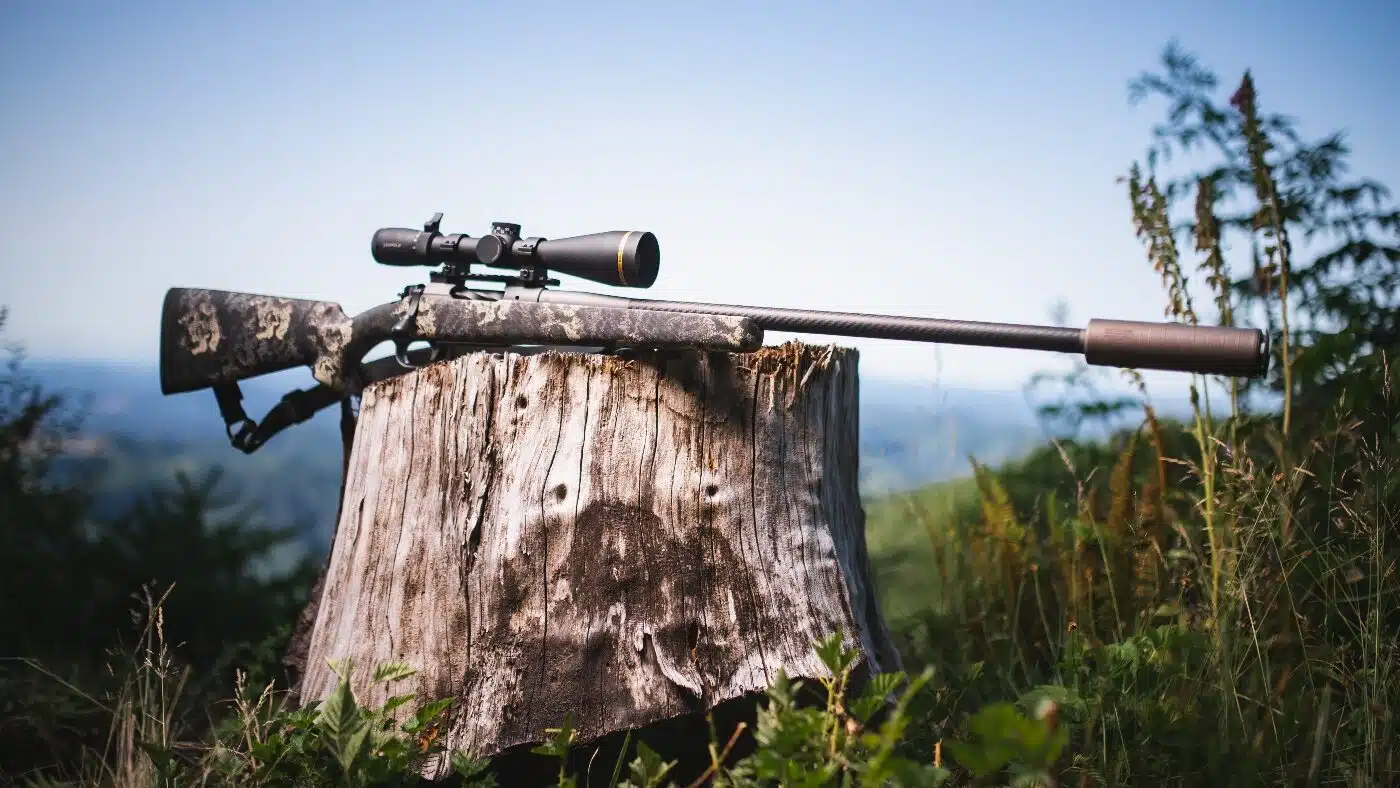
As you can imagine, the opponents are apoplectic over this. Expect them to do everything they can to get this removed in the Senate. It could get better, however. Stuff can yet still be added to this bill once it hits the Senate. Who knows, maybe a 2A-friendly senator manages to get the NFA restriction on short-barreled rifles and shotguns removed so the only thing the NFA would regulate would be machine guns, destructive devices like cannons and grenade launchers, and AOWs (Any Other Weapons). AOWs can be things like handguns with vertical foregrips, guns that don’t look like guns, pistol-gripped short-barreled shotguns, and similar stuff.
Potential Outcomes
This could shake out along a spectrum from bad to awesome. Worst case, all of the gun stuff comes out of the bill and we’re stuck with things just like they have been since 1934 — draconian transfer taxes, scads of paperwork and massive artificial impediments to silencer ownership. If that happens, the legislators who are ultimately responsible for that will earn the righteous ire of tens of millions of thoroughly energized voters.
